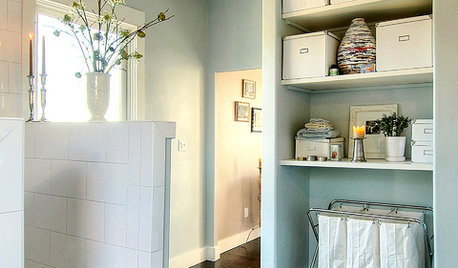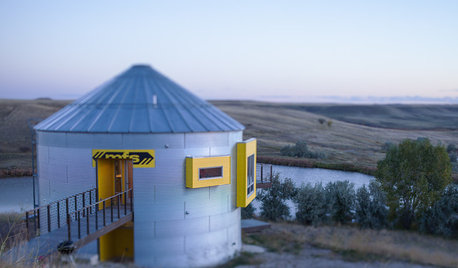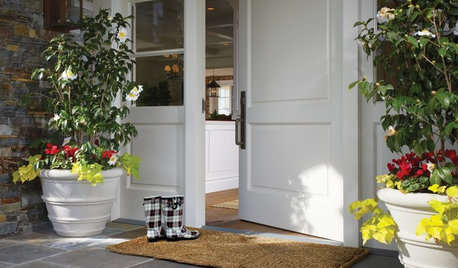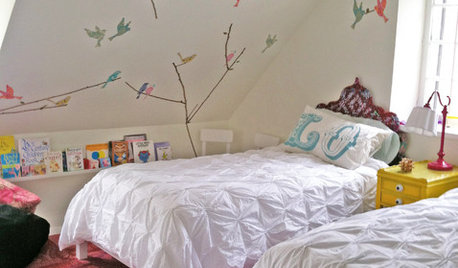Bedding at the bottom of the bin is not breaking down
sbryce_gw
14 years ago
Related Stories

LAUNDRY ROOMSMake a Clean Break With Laundry Chaos
Bins and bags, sorters and other storage — we've got several loads' worth of ways to keep your laundry neat
Full Story
GREEN BUILDINGThe Big Freeze: Inventors Break New Ground to Keep Things Cool
Old-fashioned fridges can be energy guzzlers, but there are more eco-friendly ways of keeping food fresh, as these global innovations show
Full Story
GARDENING GUIDESHouzz TV: Make a Worm Bin for Rich Soil and Happy Plants
A worm-powered compost bin that can fit under a sink turns food scraps into a powerful amendment for your garden. Here’s how to make one
Full Story
HOUZZ TOURSHouzz Tour: Prairie Grain Bin Turned Bucolic Retirement Home
An agrarian structure and a big dream combine in this one-of-a-kind home that celebrates 250 acres of Montana grasslands
Full Story
MOST POPULARA Fine Mess: How to Have a Clean-Enough Home Over Summer Break
Don't have an 'I'd rather be cleaning' bumper sticker? To keep your home bearably tidy when the kids are around more, try these strategies
Full Story
DECORATING GUIDES7 Design Rules and Why You Should Break Them
Think tile is only for kitchens and bathrooms? Art should hang at eye level? Time to consider breaking these old rules
Full Story
KITCHEN DESIGNBreaking Out of the Kitchen Work Triangle
Keep the efficiency but lose the rigidity with kitchen designs that don't box you in
Full Story
MOST POPULARThe Polite House: On ‘No Shoes’ Rules and Breaking Up With Contractors
Emily Post’s great-great-granddaughter gives us advice on no-shoes policies and how to graciously decline a contractor’s bid
Full Story
DECORATING GUIDES11 Area Rug Rules and How to Break Them
How big should an area rug be? These guidelines will help you find the right size and placement
Full Story
KIDS’ SPACES7 Kids’ Bedroom Decor Ideas That Won’t Break the Bank
Take an economical approach to decorating your child’s room with these DIY ideas
Full StoryMore Discussions






kathmcd7
Karchita
Related Professionals
Norfolk Landscape Architects & Landscape Designers · Brentwood Landscape Architects & Landscape Designers · Avocado Heights Landscape Contractors · Burien Landscape Contractors · Golden Gate Landscape Contractors · Hoover Landscape Contractors · River Ridge Landscape Contractors · Ronkonkoma Landscape Contractors · Salem Landscape Contractors · Whitehall Landscape Contractors · Winchester Center Stone, Pavers & Concrete · Bowling Green General Contractors · Homewood General Contractors · Phenix City General Contractors · San Carlos Park General Contractorscathd66
sbryce_gwOriginal Author
gardenfanatic2003
sbryce_gwOriginal Author
takadi
fosteem1
cathd66
veracan
susanfromhawaii
susanfromhawaii
sbryce_gwOriginal Author
greenboywi